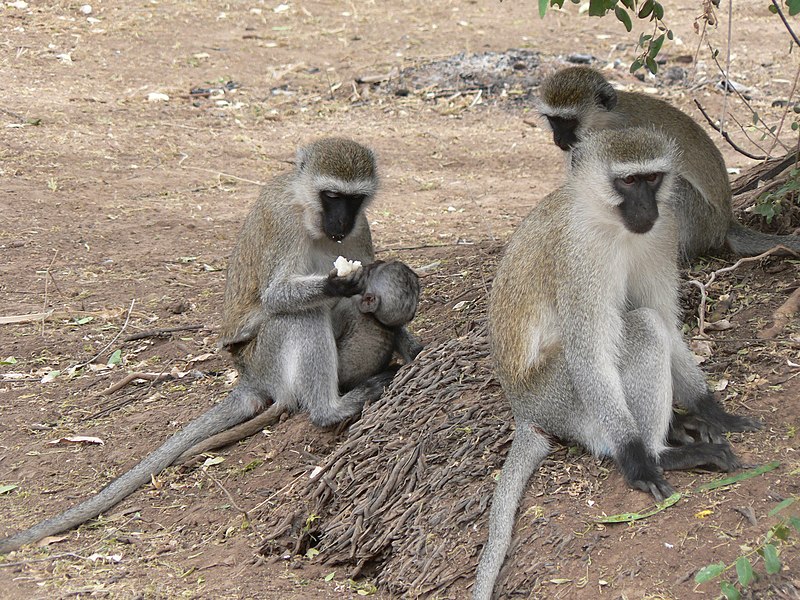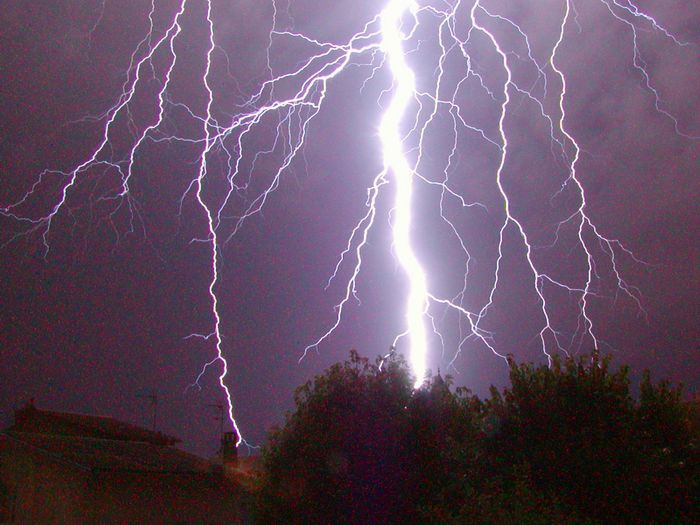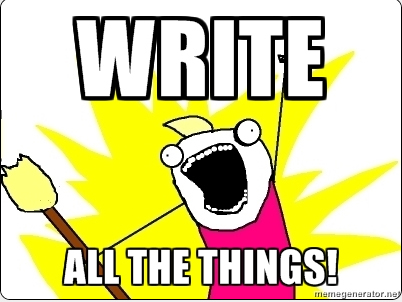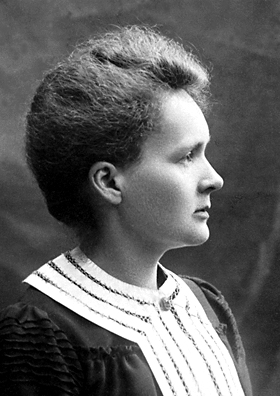Monday feels like an entire lifetime ago. I think you could ask anyone in the metro-Boston area, and they would agree.
"It doesn't feel real."
"It feels like the past few days don't exist."

These are the types of things people are saying. It's not that we aren't aware of the past few days' existence (trust me, we're painfully aware). It's that they were so surreal, that I and many others keep expecting to wake up and have it be Marathon Monday again. Like, this week was just a nightmare, that all this time hasn't actually passed, that this past week was just so horrifyingly removed from reality, that reality must've actually gone on hold, and time will pick back up where it came crashing to a halt last Monday.
But it won't. Somehow, we all need to accept that all this did happen. It wasn't a nightmare. That we need to somehow learn to move forward after experiencing horror close-up.
I consider myself amazingly, superbly lucky in all this. No one I knew was hurt or killed. I was home safe. I didn't have to witness the carnage on Monday in person. I wasn't trapped in Watertown yesterday.
But to say I wasn't affected by any of this would be a flat-out lie.
 |
| Happy morning, preparing for the runners to come by. |
|
|
I was at the Boston Marathon on Monday. I wrote about that day
here, back when I was barely coherent enough to string sentences together. I was handing out water at Mile 3 with many of my friends and coworkers. I left after the runners finished passing by. I went home. Many of my friends and coworkers did not.
Many of them were down near the finish line when the bombs hit.
I spent Monday afternoon and evening watching the news and obsessively checking texts and emails. Some friends checked in sooner than others. Some took hours. Painful, scary hours, as at that time there were no official names or numbers for the dead and injured. And all we could do was wait to hear from those we cared about. Boston waited to hear. Massachusetts waited to hear. Let's be honest, this is an international event...the
world waited to hear.
Tuesday. I went to work. People I knew were okay. That much was a relief. But what wasn't a relief was learning some of the names and faces of the victims, or heading back into the city, knowing the danger was still out there. I was able to speak to some of the people who were there on Monday. There was hugging. I wore the BAA pin that they hand out to all the Marathon volunteers. I wore that every day this week.
Wednesday came and things felt no more resolved. I was beginning to become more determined not to be intimidated by the events, though, and managed to get more work done in the office than I had on Tuesday (which, lets face it, was not the most productive day). Press conferences were canceled, postponed, then canceled again. It was a day of turmoil and zero answers. All I could do was hope that the lack of answers meant someone, somewhere, was getting close to solving this thing and had to keep it under wraps.
Thursday. A service was held in Boston to remember the victims. Many Important People were there. Traffic was awful. Life continued on in its new, foggy-brained way. Still no answers, and many began to worry that it was too late for answers. That surely, the person or people responsible had escaped already.
Thursday evening, we saw their faces. A long-awaited press conference showed a video clip of two people suspected to be the Marathon Bombers. The FBI requested the public help identify them and locate them, but to by no means approach them.
As I'd done every night that week, I turned off the news and crawled into bed early with a book (I've been rereading THE ADVENTURES OF TOM SAWYER). I read for a while--long-enough, I'd hoped, to keep the nightmares at bay.
My 6 am alarm went off. I immediately checked my phone for the latest in the news, as I'd been doing every morning. I expected nothing. I expected the news to be much the same as it'd been every other day since the attack...that there were leads, but nothing major.
Instead, I saw "ONE SUSPECT DEAD. OTHER AT LARGE IN THE CITY OF WATERTOWN."
And I
flew out of bed. My knee is broken, and I still have no memory of how I got into the living room with the news on and my computer booting up so quickly. I have
friends in Watertown. Many friends.
I watched in horror as they showed video from the night before of a firefight with explosions in this quiet suburb. I could only stare, numbly repeating, "Holy shit. This isn't happening. Holy shit. This isn't happening."
 |
| The scene down the street from my friends' apartment. |
I soon got confirmation that all my friends were okay. None of them were being held hostage or anything. That gave me some relief. But then, as the morning progressed, I watched the SWAT teams move through the neighborhoods, and then converge around one particular area and one house...which happened to be around the block from the home of two of my good friends and coworkers, Karen and Donna.
And the police were reporting that the man that had died had a suicide vest on him. That the one in hiding may blow himself up, or blow other things up, or shoot other people like they did to that poor officer (who I later learned is from my town, continuing to make this whole situation far too personal). There was a terrorist bomber hiding somewhere absurdly close to my friends.
I couldn't turn the news off. I couldn't.
In continuing surrealism, sirens in my neighborhood were constant. I was confused as to why...after all, technically our town wasn't on the "shelter in place" list, though looking out my window it was clear we were all opting to "shelter in place" anyway. Not a soul was out.
Then I learned, first through Twitter, then eventually through the news, that police had converged on the apartment that the terrorist brothers lived in. Some Google mapping confirmed what I'd thought: this apartment was 1.5 miles away from my own.
Now, I wasn't worried about it being rigged and blowing
me up...after all, I was over a mile away and that'd have to be one impressive bomb. Rather, knowing that the police were clearing everyone out of that area and moving in with bomb squads had me on edge for those who were close enough to be hurt. And I also worried that the bomber or perhaps accomplices might try to get back to the apartment, or escape from it, or who knows what.
 |
| Outside Karen and Donna's apartment. That is Karen's car. |
So while helicopters flew over my street and cops drove by all day securing the terrorists' apartment, I kept one eye out the window and the other on Facebook, keeping tabs on my friends who were inside their Watertown apartment, doors locked, waiting for the bomber to be caught or killed.
When 6 pm came, officials stated that they were lifting the lockdown, and I could barely believe it. I mean, they hadn't caught the guy. Sure, they couldn't keep the city on lockdown forever, but the terrorist was still
out there.
I gave up at that point. Twelve straight hours of news, twelve straight hours of levels of stress I can't ever remember being in before in my life, except for
five days earlier...I had to just turn it off. They weren't getting anywhere. They'd lost him. I made plans for a weekend of staying indoors, door bolted shut. If they'd lost him, by that point it wasn't inconceivable that he'd made his way out of Watertown to one of the surrounding areas, after all.
And then, about forty-five minutes later, a tweet from a friend caught my eye. Shots being fired in Watertown.
Oh
God.
It was just like that morning. I threw the news back on, fear clutching me. My friends had JUST posted about possibly leaving their apartment now that they'd gotten the "all clear".
But they were okay. They reported in quickly that they were okay (though they were out in the street when it happened and heard the gunfire).
Just as I got that news from them, it became clear over Twitter and local channel I was on that the police had him cornered. They had the remaining bomber. They just needed to get him out of a boat parked in a backyard without him blowing anything else up.
The stress wasn't over. I wanted this kid taken in alive. We need to know why they did what they did. We need him alive. And I still had fear that he had bombs somewhere he could set to explode.
So when it finally happened...when I watched on TV as the cops all relaxed in unison and began applauding...I physically shuddered in relief.
It was over. They had him. Nothing else was blowing up. No one else was getting shot. My friends were safe. Everyone was safe.
I don't know how to put into words the emotion I went through last week. I tried to give a run-through of the events here, but it doesn't do it justice. Nothing will. I hit a level of emotion and stress I didn't know was humanly possible,
and I wasn't even directly involved. I can't imagine what it must have been like to be at the bombing on Monday. To be a first responder. To be in Watertown yesterday. All these levels of involvement further than my own.
So I guess that's my message to everyone who wasn't here at all. I don't think it's possible for most Americans outside the situation to begin fathoming what life has been like here in Boston this past week. Everyone is enormously grateful of your support, but just know that many of us aren't ready to look at these events in any "bigger context" yet. We're recovering. We're celebrating our newly regained freedom. We're grieving for those hurt and killed. We're pulling ourselves back together.
We'll let the rest of the country and the media debate things like motives, political implications, etc. But for us here in Boston, we're all just remembering how to breathe.
Thank you again to everyone who reached out in concern for me this week.
Knowing you cared has been one of the few positive things I could cling
to through this all. And I want to send a special thanks to all the law
enforcement officials who made our city safe again this week, and to
the first responders who saved so many lives after the attack. Gratitude
doesn't begin to describe what I feel. Thank you.
*Photo Credits:
AP Photo/Julio Cortez, Karen Powers, and myself.






















